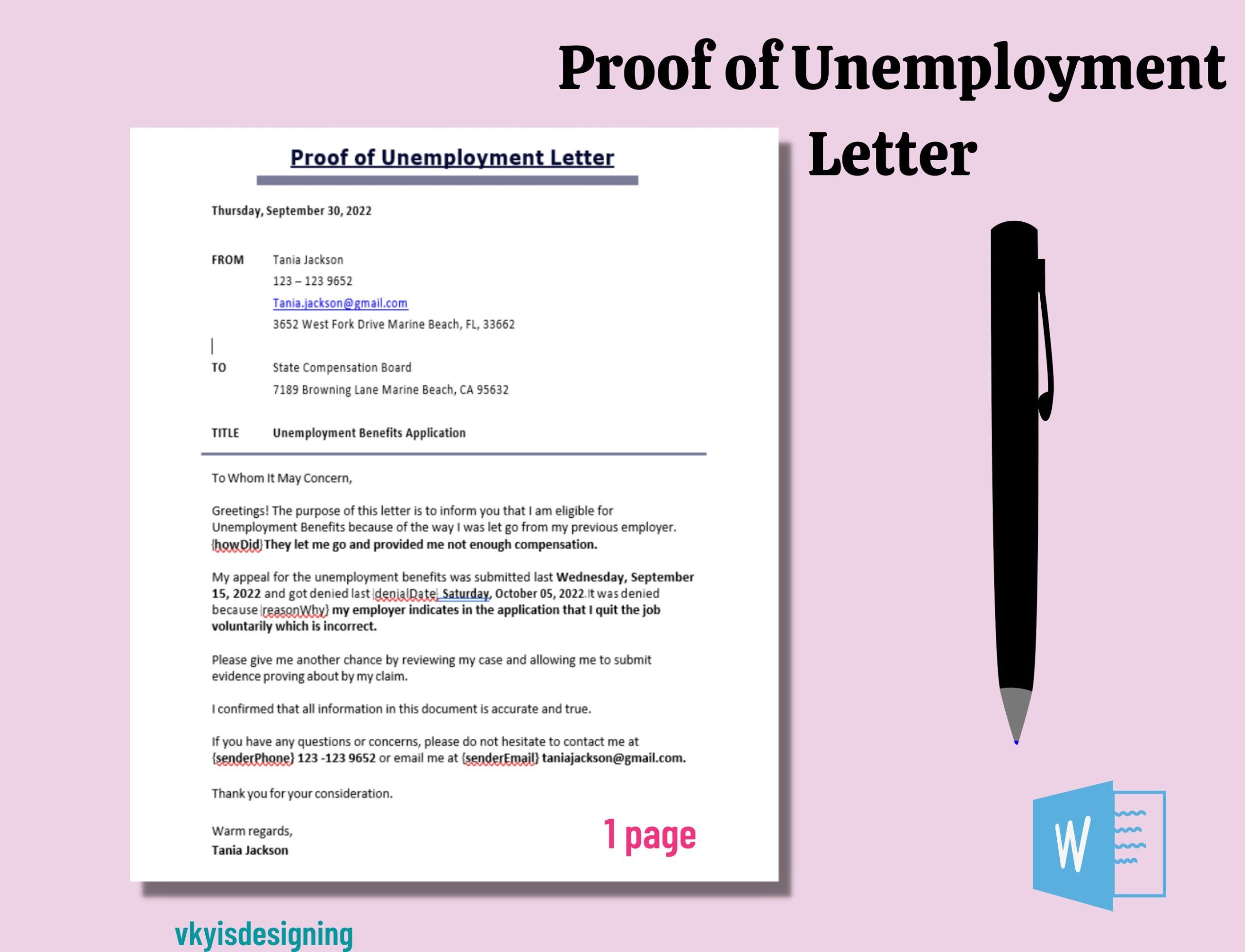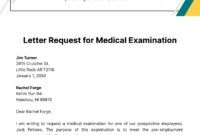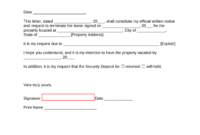Navigating periods of unemployment can be incredibly challenging, and sometimes, you might find yourself needing to formally document your situation. Whether you’re applying for financial assistance, seeking loan deferments, or simply need to explain a gap in your employment history, having official proof can make a significant difference. It’s a way to clearly communicate your current status to various institutions or individuals who might require this information.
While the idea of writing such a letter might seem daunting, especially during an already stressful time, it doesn’t have to be. Many people face similar situations, and a well-structured letter can help you convey the necessary details accurately and professionally. This is where understanding the key components of such a document comes in handy, ensuring you don’t miss any crucial information that could impact your application or request.
What is a Proof of Unemployment Letter and Why Do You Need One?
A proof of unemployment letter is essentially a formal document that verifies an individual’s current job loss or lack of income from employment. It serves as an official statement, either from the individual themselves or sometimes from a previous employer or government agency, confirming that they are not currently employed. The specific content and format can vary depending on who is requesting it and for what purpose, but its core function remains to attest to one’s unemployment status. This letter often accompanies other financial documents and applications, adding a layer of credibility and clarity to your situation.
The reasons for needing this type of letter are diverse and touch upon various aspects of personal finance and government interaction. For instance, if you are struggling to make rent payments, your landlord might request proof of your unemployment status to consider a payment plan or discuss your tenancy options. Similarly, banks or credit card companies may ask for this documentation if you are seeking a loan modification, deferment of payments, or relief from late fees. It’s their way of assessing your current financial capacity and determining what assistance they might be able to offer.
Beyond financial institutions, government agencies frequently require proof of unemployment when you are applying for benefits. This could include state unemployment benefits, housing assistance programs, food stamps, or other social welfare initiatives designed to support individuals during periods of hardship. These agencies need to verify your eligibility by confirming your lack of employment before they can disburse aid. Without proper documentation, your application for vital support could be delayed or denied, making a clear and concise letter incredibly important.

Ultimately, this letter acts as a bridge between your personal circumstances and the formal requirements of various organizations. It helps ensure that your story is heard and understood within a structured framework, allowing institutions to make informed decisions about your requests. Having a clear and readily available proof of unemployment letter template can significantly streamline this process, saving you time and reducing stress when you need it most.
Common Scenarios for Needing Proof of Unemployment
- Applying for a new rental agreement where income verification is crucial.
- Seeking loan modifications or deferrals from banks or credit card companies.
- Requesting utility bill assistance or payment extensions from service providers.
- Applying for certain government benefits or subsidies such as unemployment insurance.
- Explaining a gap in employment history for future job applications to prospective employers.
Crafting Your Proof of Unemployment Letter: Key Components and Tips
When it comes to writing your own proof of unemployment letter, clarity and professionalism are paramount. Even though you are conveying a difficult personal situation, the letter itself should be direct, factual, and free of emotional language. The goal is to provide the necessary information efficiently so that the recipient can quickly understand your status and the purpose of your communication. Think of it as a formal declaration, much like any other official correspondence you might send or receive.
Starting with a solid structure is key. Every formal letter begins with your contact information, followed by the date, and then the recipient’s contact information. This ensures that the letter is properly attributed and directed. A clear and concise subject line is also vital, immediately informing the reader about the letter’s content. Something like “Subject: Proof of Unemployment – [Your Name]” works perfectly, leaving no ambiguity about its purpose.
The body of the letter is where you will state your unemployment status. Be direct: “This letter serves as formal notification that I am currently unemployed.” Follow this with the date your employment ended, if applicable, and if possible, briefly state the reason for your unemployment. While you don’t need to go into excessive detail, a simple “due to layoff” or “due to resignation” can provide context without oversharing. Remember, the focus is on proving your status, not on telling a long story.
Finally, clearly state what you are requesting or the purpose of the letter. Are you asking for a rent reduction, a loan deferral, or simply providing documentation for a benefits application? Make this explicit. Offer to provide additional documentation, such as a termination letter or bank statements, if needed. Close with a professional sign-off like “Sincerely” or “Regards,” your signature, and your typed name. Utilizing a robust proof of unemployment letter template can ensure all these crucial elements are consistently included, giving your letter the strongest possible impact.
When you’re facing financial uncertainty, having a well-structured and clear letter to present can significantly smooth your interactions with landlords, lenders, and government agencies. It demonstrates your proactive approach to managing your situation and provides the necessary documentation they require to process your requests or applications. Taking the time to craft a precise and professional communication can truly make a difference in securing the support and understanding you need during challenging times.
This structured approach ensures that all necessary information is conveyed without confusion, allowing the recipient to quickly understand your situation and what you’re asking for. It reinforces your credibility and commitment to addressing your circumstances effectively.



